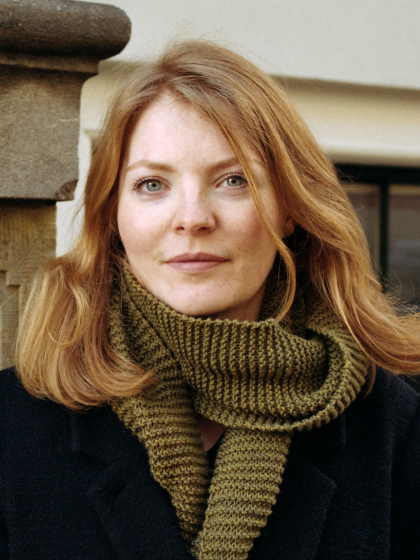R.E. (Ruby) de Vos

In my current research, I explore Dutch nuclear aesthetics and culture post-1990.
PhD dissertation: Living with Toxicity: Disruptive Temporalities in Visual Art and Literature
Today’s world is deeply toxic: both human bodies and their environments bear traces of all kinds of industrial toxicants. We are, essentially, living with toxicity. In considering this new status quo, research focuses usually on toxicity’s effects on human health. This dissertation proposes that we also need to take seriously the impact of toxicity on human relations to time, which shape contemporary life. It additionally argues that visual art and literature can play crucial roles in identifying and articulating these temporal perturbations as a form of toxic violence.
Living with Toxicity establishes toxicity as a deeply temporal phenomenon. Toxic substances linger in the environment into the far future; a person’s body might carry the traces of chemicals outlawed 30 years ago; and the effects of exposure sometimes only become visible years later, creating a state of perpetual uncertainty. Consequently, understanding the temporal aspects of toxicity goes to the heart of understanding how living with toxicity takes shape. Visual art and literature shed light on the notoriously elusive phenomena of time and toxicity. What unites the studied works is that they all invite their audiences to consider how normative, established, and predictable ways of orienting oneself in time become increasingly less attainable in living with toxicity. Ultimately, this dissertation argues that the temporal disorientation, instability, and sense of impasse that living with toxicity engenders should be understood as forms of toxic harm in their own right.
To address my research questions, I looked at the effects of toxicity on the temporal realm at three levels across four chapters: (1) large-scale time, particularly in relation to futurity; (2) life time, sometimes also called autobiographical time (3) and everyday life. Thus I turn to the question of reproductive futurity in the artist’s book Letter To My Dear, the sculpture Woodland Child, and the short film Nuclear Waste in Chapter 1; spectral latency in the novella From Trinity to Trinity in Chapter 2; everyday exposure in the photography book The Canaries, the performance Instructions for Living in Your Car, and the residency/exhibition Refuge in the Means in Chapter 3; and the toxic meanwhile in the photography books Poisoned Landscape (Giflandschap) and Poisoned Landscape Revisited in Chapter 4. Although the four chapters move across very different media, different toxicants, and different historical contexts, together they address four fundamental challenges posed by toxicants: their longevity, their latency, their ubiquity, and their invisibility.
| Last modified: | 24 July 2024 07.49 a.m. |
